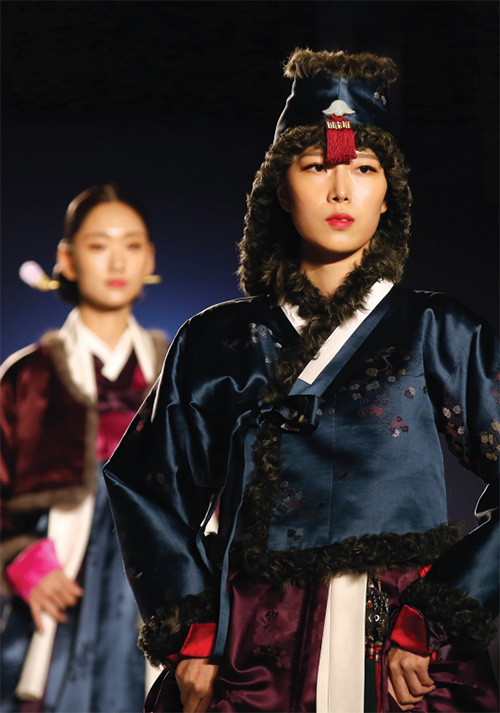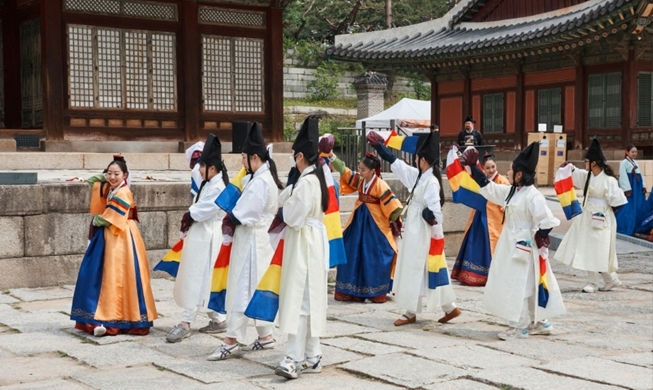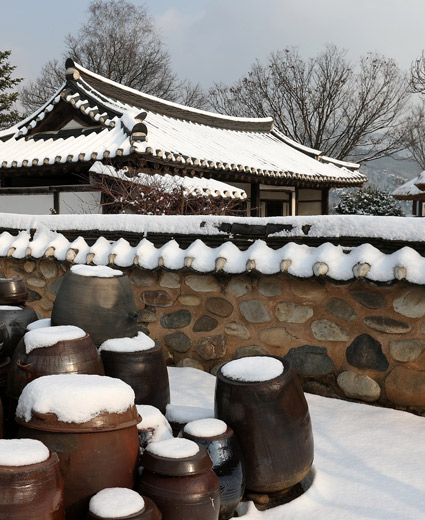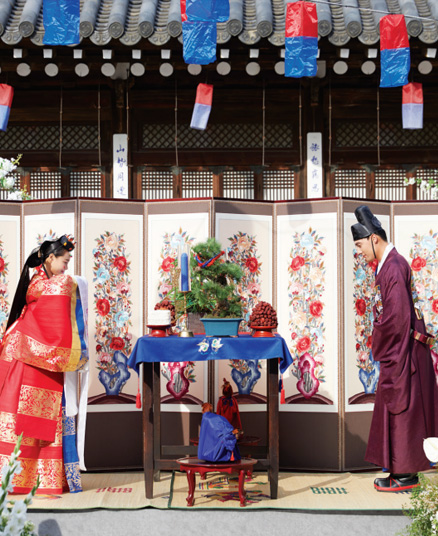-
 Korea.net's 24-hour YouTube channel
Korea.net's 24-hour YouTube channel- NEWS FOCUS
- ABOUT KOREA
- EVENTS
- RESOURCES
- GOVERNMENT
- ABOUT US
Korea has four distinct seasons, is surrounded by the sea on three sides, and has a natural environment with more mountains than plains. In this environment, Koreans have developed an excellent and unique food, clothing, and shelter culture. To stay well in the cold winter and hot summer, they developed various clothing materials, made their own clothes, and made food with the mindset that “health comes from eating.”
Adapting to the natural environment, they also developed a unique style of housing called hanok. Currently, Korea’s unique traditional lifestyle is rapidly spreading around the world.

At the Hanbok Fashion Show held on Hanbok Day(October 21), you can see a variety of hanbok.
Clothing and Fashion
Hanbok refers to traditional Korean attire. Koreans in the past used cloth, silk, hemp, ramie, and other materials to make clothes tailored to the distinct four seasons of the Korean Peninsula. A complete set of hanbok consists of jeogori, which covers the arms and the torso, a skirt or a pair of trousers, and durumagi, which serves as outerwear. With a snug fit and soft lines, the clothes give an elegant look overall.
Korean people in the past tended to prefer simple, white clothes, for which they were often referred to as the “white-clad people.” However, they would wear more ostentatious clothes with elaborate colors and designs depending on the period, status, and occasion. The clothes mainly featured five colors: white, black, blue, red, and yellow, collectively called obangsaek.
Today, hanbok is more often worn for special occasions than as casual clothes, such as wedding ceremonies, children’s first birthdays, and seasonal holidays including the Lunar New Year’s Day and Chuseok.
Hanbok began to attract global attention with its charm and aesthetics as K-Pop stars such as BTS and BLACKPINK showed off various styles inspired by the hanbok in their music videos. The interest in hanbok was further boosted by the popularity of Korean periodic dramas Kingdom and The King’s Affection, released by global streaming video services. Young Koreans also rediscovered the appeal of hanbok; by visiting tourist attractions—ancient palaces in Seoul such as Gyeongbokgung Palace, Changdeokgung Palace, Changgyeonggung Palace, and Deoksugung Palace, the Hanok Village in Jeonju, and the Hwangnidan Street in Gyeongju—wearing hanbok from rental stores has become one of the most popular tourism activities for Korean youths. In addition, numerous fashion brands have released casual outfits designed by adapting hanbok to fit the modern lifestyle, and some schools chose hanbok–inspired clothes as their uniforms.
In July 2022, the Cultural Heritage Administration (CHA) of Korea designated the traditional “hanbok lifestyle” as an intangible cultural heritage representing the Korean identity and values.














